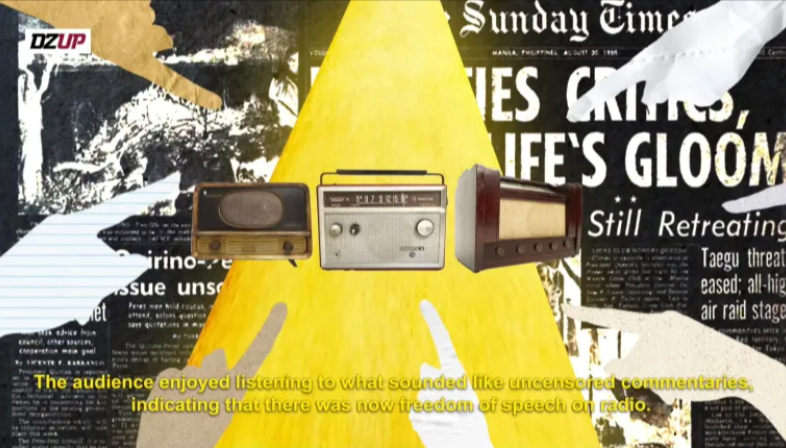The University of the Philippines (UP) officially launched the celebration of 100 Years of Broadcasting in the Philippines (100 YBP) with a documentary presentation and webinar hosted by the Department of Broadcast Communication (DBC) of the College of Mass Communication (CMC) in UP Diliman, on June 29.
The documentary “Wika, Awit, Radyo, at Pananakop” tackles the origins and development of radio broadcasting in the Philippines, from the American Colonial period to the post-World War 2 era, as radios became more accessible and part of everyday life. This documentary, produced and written by Professor Elizabeth Enriquez and directed by Maps Arciga, utilized animation, archival videos, and printed sources. It asserts how broadcasting was first used as a colonial apparatus, but later adopted for local purposes. Tagalog and other Filipino languages took centerstage in the story, being formative to the medium’s acculturation process.
UP President Danilo Concepcion, UPD Chancellor Fidel Nemenzo, UP Visayas Chancellor Clement Camposano, and UPD CMC Dean Fernando Paragas delivered their messages of support for the webinar and centenary celebrations. Concepcion acknowledged the role of UP educators and alumni in shaping mass communication in the country, especially in spreading accurate and valuable information through radio and television and keeping the broadcasting industry alive.
In the documentary, Enriquez explained that the Americans used broadcasting as an effective tool for colonization until it became helpful to local businesses and integrated into Filipino culture. “It was part of the American strategy to reshape the consciousness of Filipinos in the American cultural mold. The English language and popular music from the West were first heard on the radio and used as the standard by Filipino broadcasters. While Filipino listeners enthusiastically adopted the foreign sound, it did not take long for Tagalog and kundiman to enter the soundwaves.”
The Japanese were the new colonizers during World War II. According to the documentary, they “attempted to purge America from Filipino consciousness. Tagalog and other local languages and local musical compositions and folk songs enjoyed airtime. Still, English and American music were not wiped out while Filipinos hardly learned Nihongo and did not become accustomed to Japanese music.”
“After the war, broadcasting spread throughout the country. The English language and popular music from the United States were back on the air. But so were Tagalog and other Filipino languages as new radio stations began operating in the provinces. Filipino singers and musicians performing on the air attained fame, especially when the local music recording industry took off,” Enriquez added.

